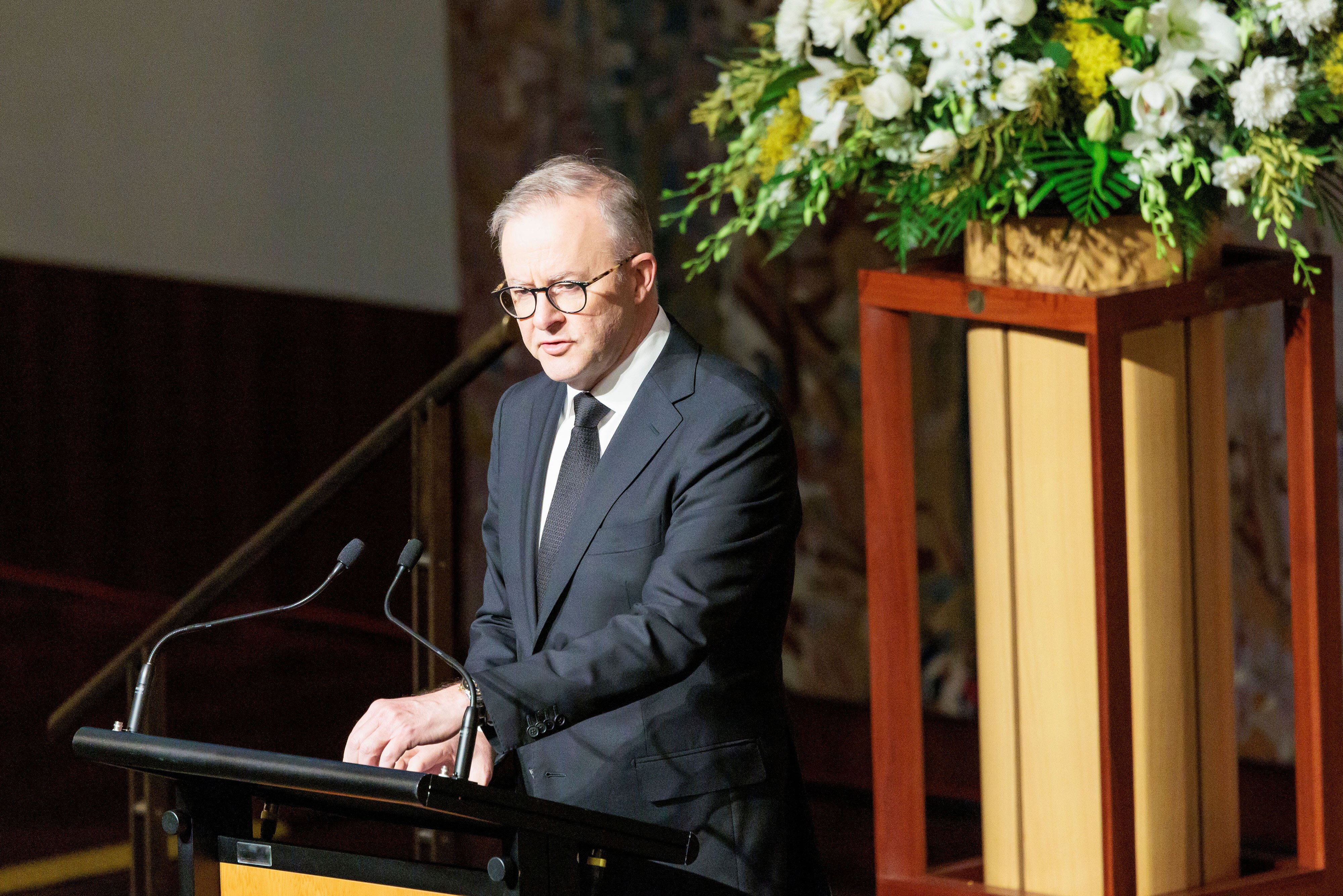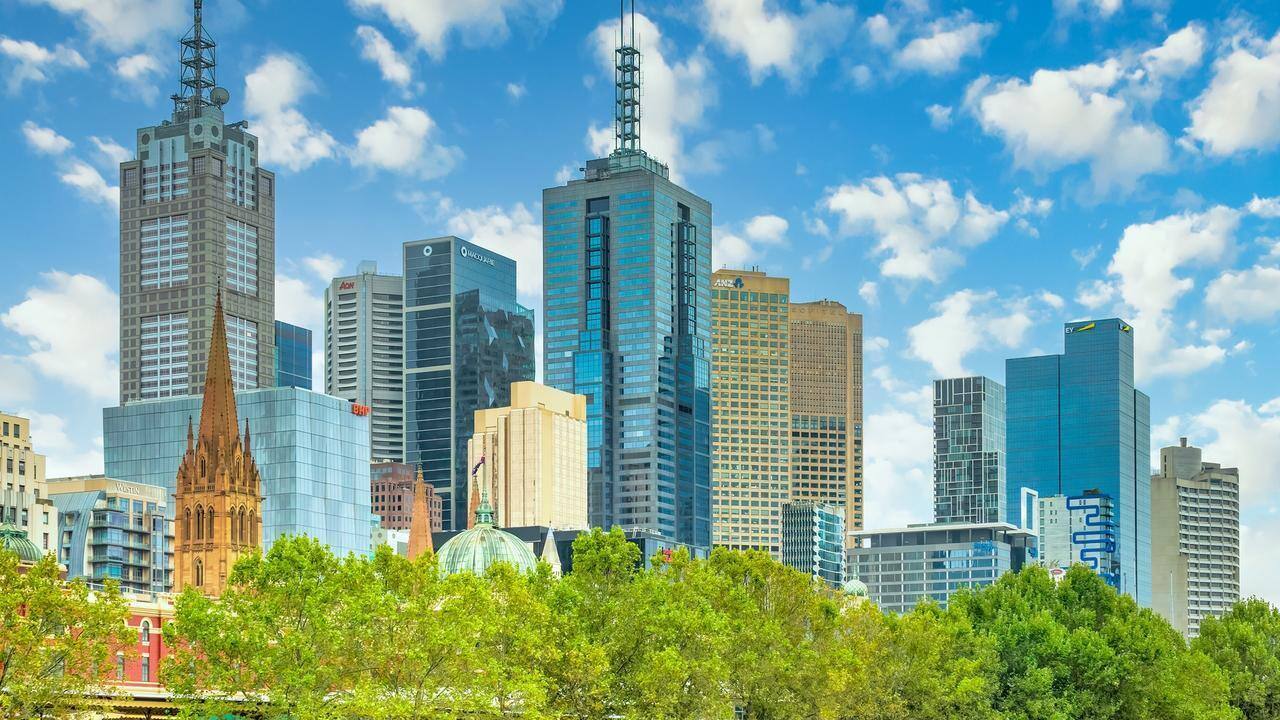Features > Property News & Insights > Housing Trends
High-Density Housing Development - PM puts Local Councils on Notice

KEY POINTS
- Prime Minister Anthony Albanese has told local councils to speed up approvals for high-density developments
- The move comes as doubts grow about the government’s target of building 1.2 million well-located homes over the next five years
- Supply and other challenges in the building industry mean home completion rates are currently falling
- PropTrack research shows it’s also taking developers longer to complete high-density housing developments
The Prime Minister has put Australian local councils on notice to speed up approvals for higher-density home developments, in a bid to ease the national housing crisis.
The move comes as building and development experts have raised new questions about Anthony Albanese’s ambitious housing targets.
Speaking in Sydney, Mr Albanese said “all levels of government, including local government”, needed to put their shoulders to the wheel in the quest to build more homes.
The Prime Minister said this included “having appropriate approvals” - a pointed reference to local councils who have stymied or stalled the approval of higher-density developments, largely because of complaints from existing residents.
The PM’s local council singled out
Anthony Albanese singled out Sydney’s large Inner West Council - which covers his electorate of Grayndler - for a serve, bemoaning a lack of high-density development along Parramatta Road, the key east-west route that links Sydney’s CBD to the major centre of Parramatta.
“An area like Parramatta Road should, in my view, be subject of much higher densities than are there.”
“It's been talked about for a long time.”
“It's in my electorate.”
“I want to see development and dwellings along that corridor and along other corridors that have public transport.”
According to the Financial Review, the Labor-controlled council - which covers 35 square kilometres and has a population of about 186,000 residents - approved only 605 homes in 2022-23 and just 96 dwellings in the first four months of the 2023-24 financial year.
Shaky target
In August last year, the Prime Minister managed to get an agreement at National Cabinet for a new target to build 1.2 million affordable and well-located homes over the next five years - up from a previous aspiration of one million homes.
PropTrack economist Angus Moore has estimated that would require Australian builders to complete 240,000 new homes each year, a feat that’s never been accomplished before.

However, industry body Master Builders Australia predicts that the target could be reached in 2026-27, forecasting a total of 241,000 homes being completed in that financial year.
But that would be a significant ramp-up from more recent housing starts.
New home building activity is currently declining, with work estimated to have started on 173,755 new homes during 2022-23 – a 16.5% decrease from the previous year.
And Master Builders predicts that in the 2023-24 financial year, new home starts will total just 170,100.
If these forecasts are accurate, Australia will fall 160,000 homes short of the government’s 1.2 million homes target.
Developers’ doubts
Major developers believe there will have to be more incentives and a major sea-change in planning approval timeframes to meet the Federal government’s housing targets.
With state governments across the country keen to build within existing urban footprints, development advisory company Urbis has pointed out that a “business-as-usual approach” can see high-density housing developments take 7-10 years to deliver.
“Urbis Apartment Essentials Data shows that the median timeframe from lodging a development application to completion for large apartment projects with more than 200 units is 4.9 years,” says Urbis Director and urban planner Ashleigh Ryan.
“In many cases, this timeframe follows years of pre-planning at the rezoning or precinct planning stage.”
“Many high-density apartments recently completed have been located in precincts that were 10 years in the making,” she says.
PropTrack’s Angus Moore also points out that it’s taking builders longer and longer to complete homes in Australia, particularly high-density developments like apartments.

PM optimistic
The Prime Minister acknowledges his target is ambitious, particularly coming on the back of a challenging time for the building industry.
“We know that there have been supply chain issues as a result of global inflation, as a result of the post-pandemic,” he said.
But he is confident things will improve.
“That will, of course, lift up over a period of time.”
Mr Albanese referred to recent positive developments in New South Wales, including a deal brokered by the state government, which will see Sydney’s Rosehill Gardens racecourse relocated and replaced by 25,000 homes.
“I've been with (NSW Premier) Chris Minns around the Hurstville-St George area (in Sydney’s south), looking at places that were dilapidated and not occupied, public housing dwellings, refurbishing them, making them fit for purpose.”
“Making sure that we expand social housing numbers, but also, of course, that we have private sector dwellings as well,” he said.
Stay Up to Date
with the Latest Australian Property News, Insights & Education.




.png?width=292&height=292&name=Copy%20Link%20(1).png)
 SIGN UP FOR FREE NEWSLETTER
SIGN UP FOR FREE NEWSLETTER








.jpg?width=1920&height=1080&name=Warning%2c%20You%20Might%20Be%20Facing%20Higher%20Taxes%20Soon%20(1).jpg)





.png?width=1920&height=1080&name=Rate%20Drops%20Signal%20BIGGEST%20Property%20Boom%20in%20DECADES%20(1).png)

.jpg?width=1920&height=1080&name=Labor%20vs%20Liberal%20These%20Housing%20Policies%20Could%20Change%20the%20Property%20Market%20Forever%20(1).jpg)
.jpg?width=1920&height=1080&name=QLD%20Slashes%20Stamp%20Duty%20Big%20News%20for%20Investors%20%26%20Home%20Buyers%20(1).jpg)
.jpg?width=1920&height=1080&name=Trump%20Just%20Slapped%20Tariffs%20%E2%80%93%20Here%E2%80%99s%20What%20It%20Means%20for%20Australia%20(1).jpg)
.jpg?width=1920&height=1080&name=Federal%20Budget%202025%20More%20Debt%2c%20No%20Housing%20%E2%80%93%20Here%E2%80%99s%20What%20You%20Need%20to%20Know%20(1).jpg)
.jpg?width=1920&height=1080&name=Australias%20Housing%20Crisis%20is%20about%20to%20get%20MUCH%20Worse%20(New%20Data%20Warns).jpg)
%20(1).jpg?width=1920&height=1080&name=Australias%20RENTAL%20CRISIS%20Hits%20ROCK%20BOTTOM!%20(2025%20Update)%20(1).jpg)
%20(1).png?width=1920&height=1080&name=Is%20Adelaide%20Still%20a%20Good%20Property%20Investment%20(2025%20UPDATE)%20(1).png)
.jpg?width=1920&height=1080&name=RBA%20Shocks%20with%20Rate%20Cuts!%20What%E2%80%99s%20Next%20for%20Property%20Investors%20(1).jpg)
%20(1).jpg?width=1920&height=1080&name=I%20Predict%20The%20Feb%20Rate%20Cut%20(My%20Price%20Growth%20Prediction)%20(1).jpg)
.png?width=1920&height=1080&name=Why%20Property%20Prices%20Will%20Rise%20in%202025%20Market%20Predictions%20(1).png)
.jpg?width=1920&height=1080&name=Why%20Investors%20Are%20Choosing%20Apartments%20Over%20Houses%202%20(1).jpg)
.jpg?width=1920&height=1080&name=Why%20Rate%20Cuts%20Will%20Trigger%20A%20Property%20Boom%20(1).jpg)
.jpg?width=1920&height=1080&name=Retire%20On%202Million%20With%20One%20Property%20(Using%20SMSF).jpg)
.jpg?width=1920&height=1080&name=4%20Reasons%20Why%20You%20Should%20Invest%20in%20Melbourne%20Now%20(1).jpg)
%20(1).jpg?width=1920&height=1080&name=Old%20Property%20vs%20New%20Property%20(Facts%20and%20Figures%20Revealed)%20(1).jpg)
%20(1).jpg?width=1920&height=1080&name=Will%20The%20New%20QLD%20Govt%20Create%20a%20Property%20Boom%20or%20Bust%20(My%20Prediction)%20(1).jpg)
%20Scott%20Kuru%20(1).jpg?width=1920&height=1080&name=Inflation%20Hits%20Three-Year%20Low%20(Will%20RBA%20Cut%20Rates%20Soon)%20Scott%20Kuru%20(1).jpg)
.jpg?width=1920&height=1080&name=How%20to%20Buy%20Investment%20Property%20Through%20SMSF_%20The%20Ultimate%20Guide%20(1).jpg)
.jpg?width=1920&height=1080&name=Victoria%20Slashes%20Stamp%20Duty%20Melbourne%20Set%20to%20Boom%20Scott%20Kuru%20(1).jpg)
.png?width=1571&height=861&name=Are%20Foreign%20Buyers%20Really%20Driving%20Up%20Australian%20Property%20Prices%20(1).png)
.jpg?width=1920&height=1080&name=The%20Single%20Factor%20That%20Predicts%20Property%20Growth%20Regions%20(1).jpg)
%20Scott%20Kuru%20(1).jpg?width=1920&height=1080&name=My%20Prediction%20On%20Rates%20%26%20Negative%20Gearing%20(Market%20Crash)%20Scott%20Kuru%20(1).jpg)

-1.png?width=1920&height=1080&name=Major%20Banks%20Cut%20Rates%20Will%20RBA%20Follow%20Suit%20(Sept%20Rate%20Update)-1.png)
%20Scott%20Kuru-1.png?width=1920&height=1080&name=Rate%20Cut%20Coming%20What%20New%20Zealands%20Move%20Means%20for%20Australia%20(Sept%20Prediction)%20Scott%20Kuru-1.png)
%20(1).jpg?width=1920&height=1080&name=Buy%20when%20the%20interest%20rates%20are%20high!%20(Why%20you%20must%20buy%20now!)%20(1).jpg)
.jpg?width=1920&height=1080&name=Carms_Revised%20Taxes%20Due%20Aug%209%20YT%20Thumbnail02%20(1).jpg)
.jpg?width=1920&height=1080&name=Carms_Too%20Little%20Too%20Late%20Aug%207%20YT%20Thumbnail01%20(1).jpg)









.jpg?width=1920&height=1080&name=Carms_Rate%20Drop%20In%20July%20Jun%2010%20YT%20Thumbnail02%20(1).jpg)
.jpg?width=1920&height=1080&name=Carms_Own%20a%20Property%20V6%20Jun%205_YT%20Thumbnail%20(1).jpg)









.png?width=1920&height=1080&name=Artboard%201%20(3).png)






.jpg?width=1920&height=1080&name=YT%20thumbnail%20%20(1).jpg)

